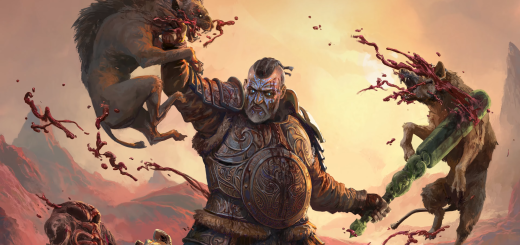Monster Hunter Rise looks like it'll be the best of both worlds
Even though Tokyo Game Show was a purely online affair this year, some traditions remain – namely that Monster Hunter stole the show, this year with the announcement of Monster Hunter Rise, the new Switch-exclusive installment that’s getting a global release on March 26th next year.
It’s the series’ debut in Capcom’s RE Engine – indeed, it’s the RE Engine’s debut on the Switch – and the first dedicated Monster Hunter for Nintendo’s hybrid device following the port of the 3DS’ Generations back in 2018. Generations’ director Yasunori Ichinose returns to the director’s chair for Rise, bringing a fair few ideas from the breakout success that was Monster Hunter World.
The map’s more diverse, with no need for loading screens between areas, while other new additions include the palamutes – canine companions who’ll help you sniff out monsters while also serving as mounts – and most excitingly the introduction of a wire bug, a device that acts like a grappling hook and allows you to traverse all sorts of terrain. It’s all very Breath of the Wild, in the best possible way.
Monster Hunter Rise – Announcement Trailer Watch on YouTube
What’s exciting, though, isn’t so much what’s been added as what’s been restored. Monster Hunter’s always been brilliantly suited to playing on the go, and to local networked play – and alongside reintroducing all of that, there’s a strain of silliness that was slightly absent in the most serious Monster Hunter World returning with aplomb.
All of which is to say Monster Hunter Rise is looking very, very exciting indeed. We sat down for a short while with series’ producer Ryōzō Tsujimoto and Monster Hunter Rise director Yasunori Ichinose to find out more.
Let’s start with an easy one! How long has this been in development for?
Ryōzō Tsujimoto: It’s been about four years in total. Ichinose was the director of Monster Hunter Generations, which came out about four or five years ago. And we did give him a bit of time off after that! It wasn’t like the next day! But we asked him if he could work on the next portable – at the time it hadn’t been released – Switch title. And we also had to consider what engine to use at the same time before we get started. We’re using the RE Engine which at the time had not yet been released, because the first title using it was Resident Evil 7. So yeah, long story short it was a total of about four years once we got all those ducks in a row.
So development had started before Monster Hunter World came out. Did you ever explore the option of bringing that to Switch? I know plenty of people asked questions about it – including myself! – around release.
Ryōzō Tsujimoto: To be honest not really, because we do treat each title as its own concept and you can’t ignore the hardware you’re releasing it on when you design the game. If you’ve got something like Nintendo Switch which is pick up and play, you can play it anywhere, you don’t necessarily want the same gameplay experience which is designed assuming you’re sitting in front of a big TV on a sofa for four hours straight. We want to be able to design a game that you can pick up for 30 minutes on the go, before bed, and get something out of that experience, and that that really affects the gameplay design and you can’t just bring that over and have it be the same, so we never really considered that when it came to Monster Hunter World.
It’s quite awesome that you’ve gone with the RE Engine as well – it’s a fantastic engine and that’s worked wonders on Capcom’s titles in recent years. How much of a challenge was it getting that on Switch?
Yasunori Ichinose: It was definitely a new challenge for us. As you mentioned, it was indeed our first time bringing an RE Engine title onto the Switch. So a lot of background technical engineering work needs to be done just to achieve targeting a new hardware platform. Of course, being an internal Capcom engine, that meant that we had the benefit of all the expertise and knowledge of our engineers to hand – they worked very hard, getting the engine working for us and ensuring that we could take the game content which involves these not strictly open world per se but large maps with no loading areas between them, having those work seamlessly whilst maintaining the graphics quality we wanted, to keep that stuff in without affecting performance and having the frame rate be something that could achieve our targets – a lot of all that stuff was a difficult balance to achieve but I think that the team has really pulled it off, targeting a comfortable 30 frames per second whilst also making the game look as good as it does and pushing the power of the Switch as much as we can. It’s been a challenging but rewarding experience.

